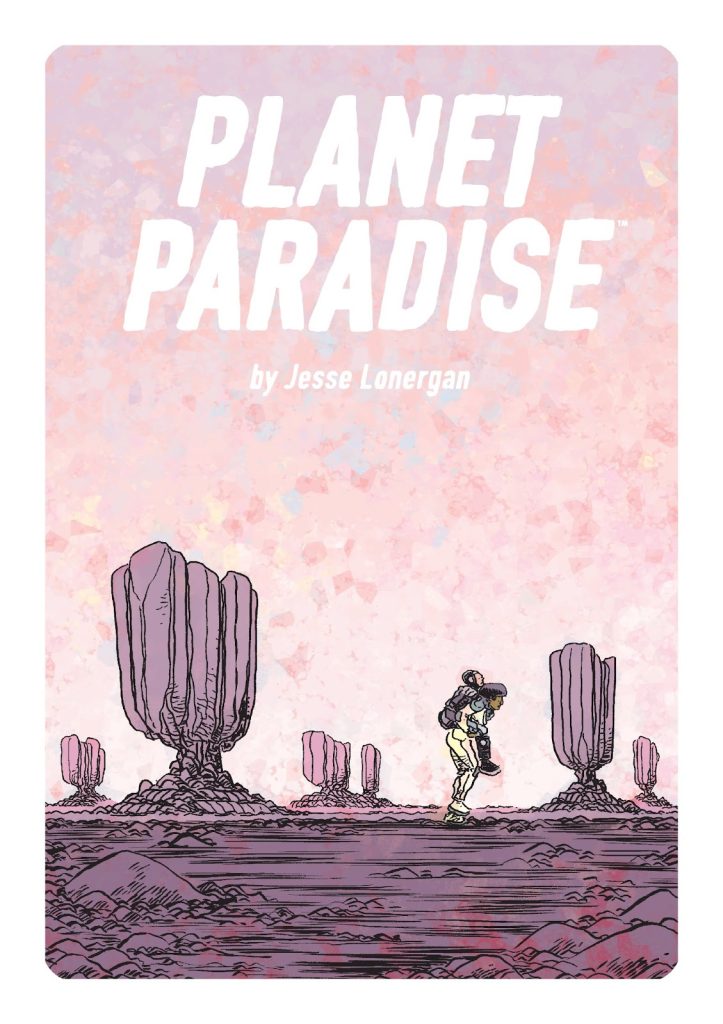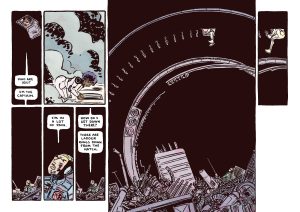Review by Ian Keogh
In the future just as now, people need to escape from the oppressiveness of daily life, compactly supplied by Jesse Lonergan in a single page gradually honing in on Eunice and Peter as they queue for boarding. Their starting point is a compressed mass of skyscrapers and the alternative is shown via an idealised image on a screen suspended high in the sky.
It doesn’t turn out that way.
Despite a very matter of fact approach to storytelling, there’s a sly sense of humour to how Planet Paradise progresses. The idea of a holiday is rapidly discarded as the craft crashes on a hostile planet. Portraits of several other characters are supplied before the story begins, but it’s only Eunice and the spacecraft’s captain who really count. She’s used to commanding, but not used to coping in a crisis, able to bark out orders, yet incapable of practical contributions to survival on alien planet. It therefore falls to Eunice to salvage and scavenge as well as set up their possible means of rescue.
Lonergan alternates his illustrations between the simplicity of the cast and their experiences and the complexity of the technology, well designed and supplied in loving detail. The base receiving distress signals is an example, so large it’s first presented across a spread as an array of reflectors, revolving parts and fiddly antennae.
There’s a constant tension to Planet Paradise, the very title providing the opposite of the experience, and Lonergan underlining that despite the technology people remain much the same. Eunice and the Captain are opposite personalities, caring and not caring, TV soaps remain an addiction and men remain patronising and condescending as far as women are concerned.
A story with some points to make, well told and offering some smiles along the way ticks a lot of boxes.





